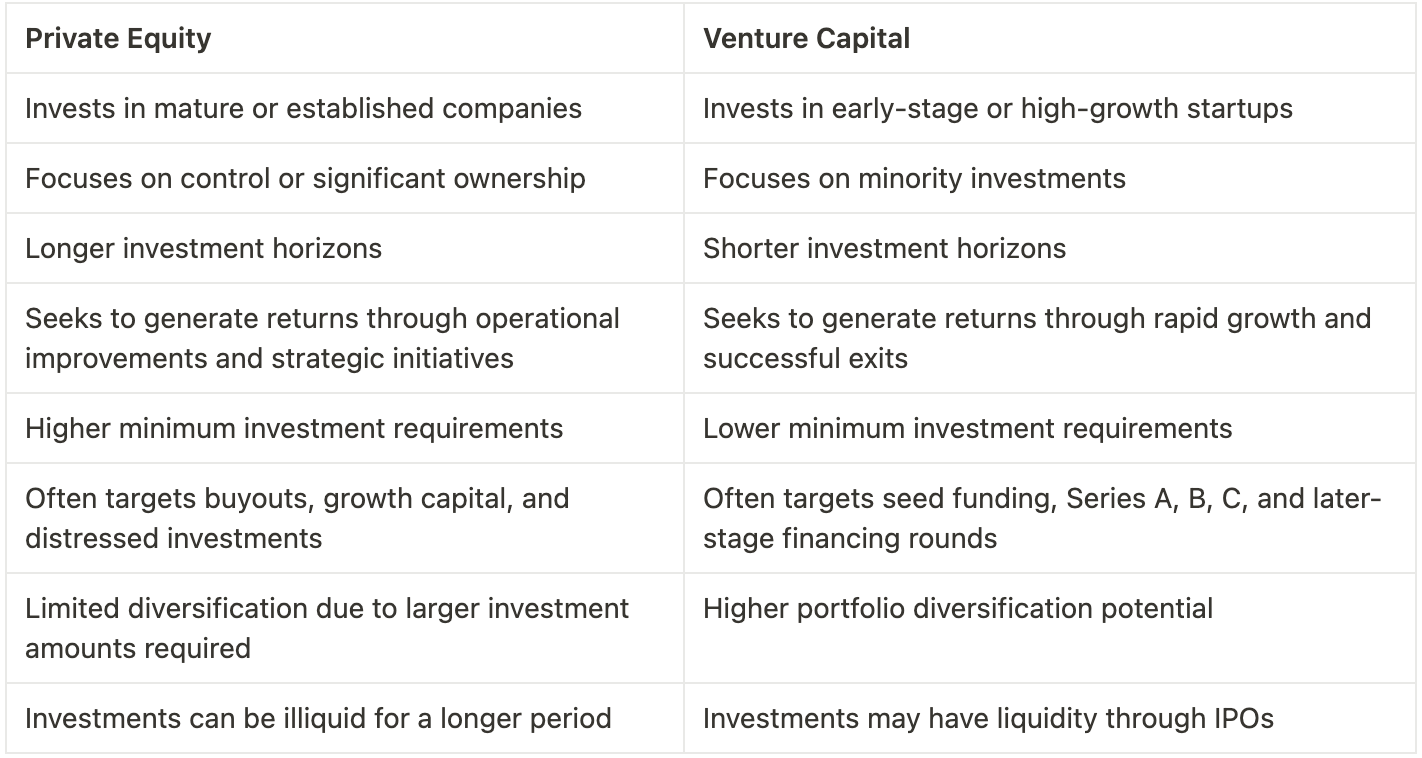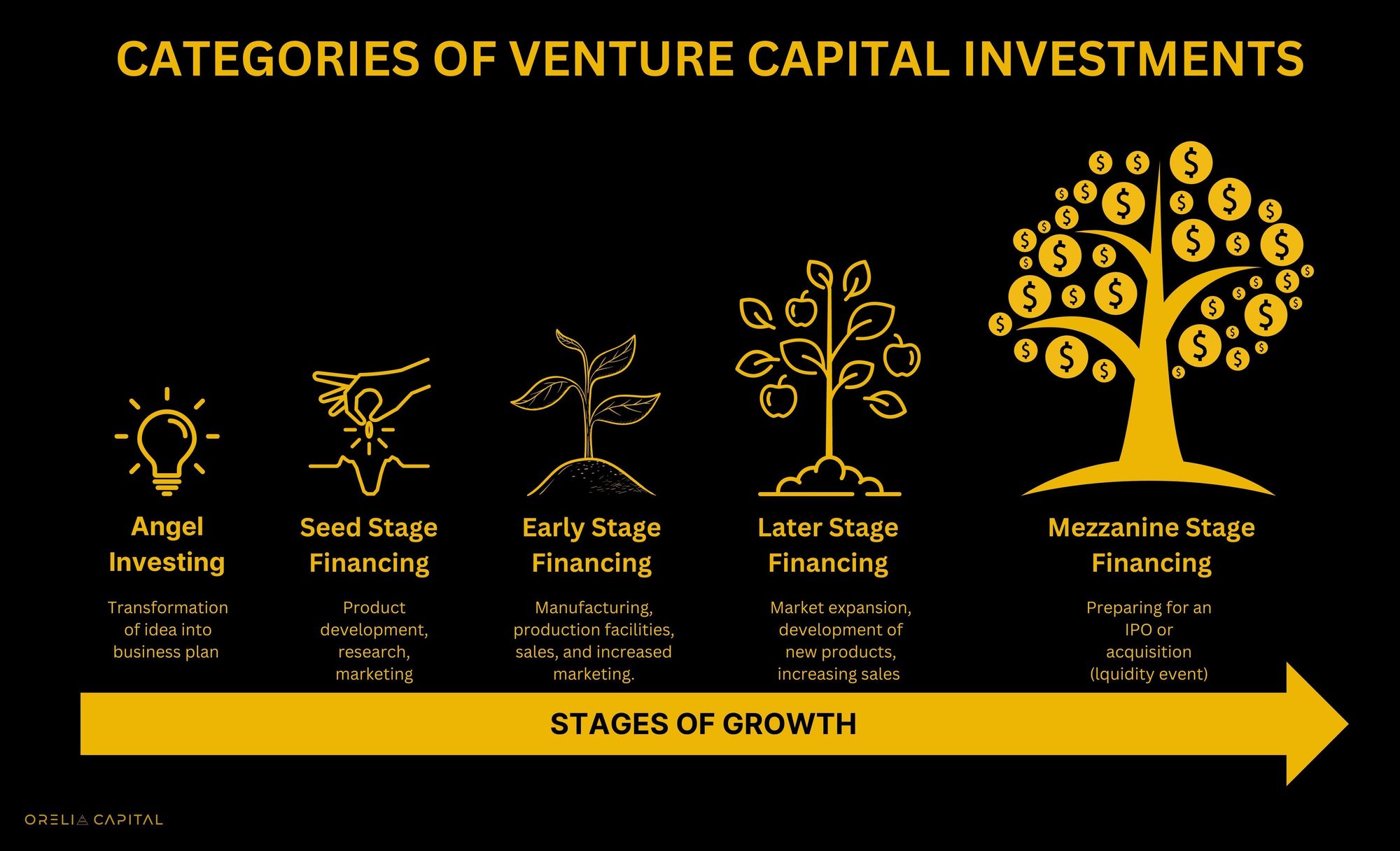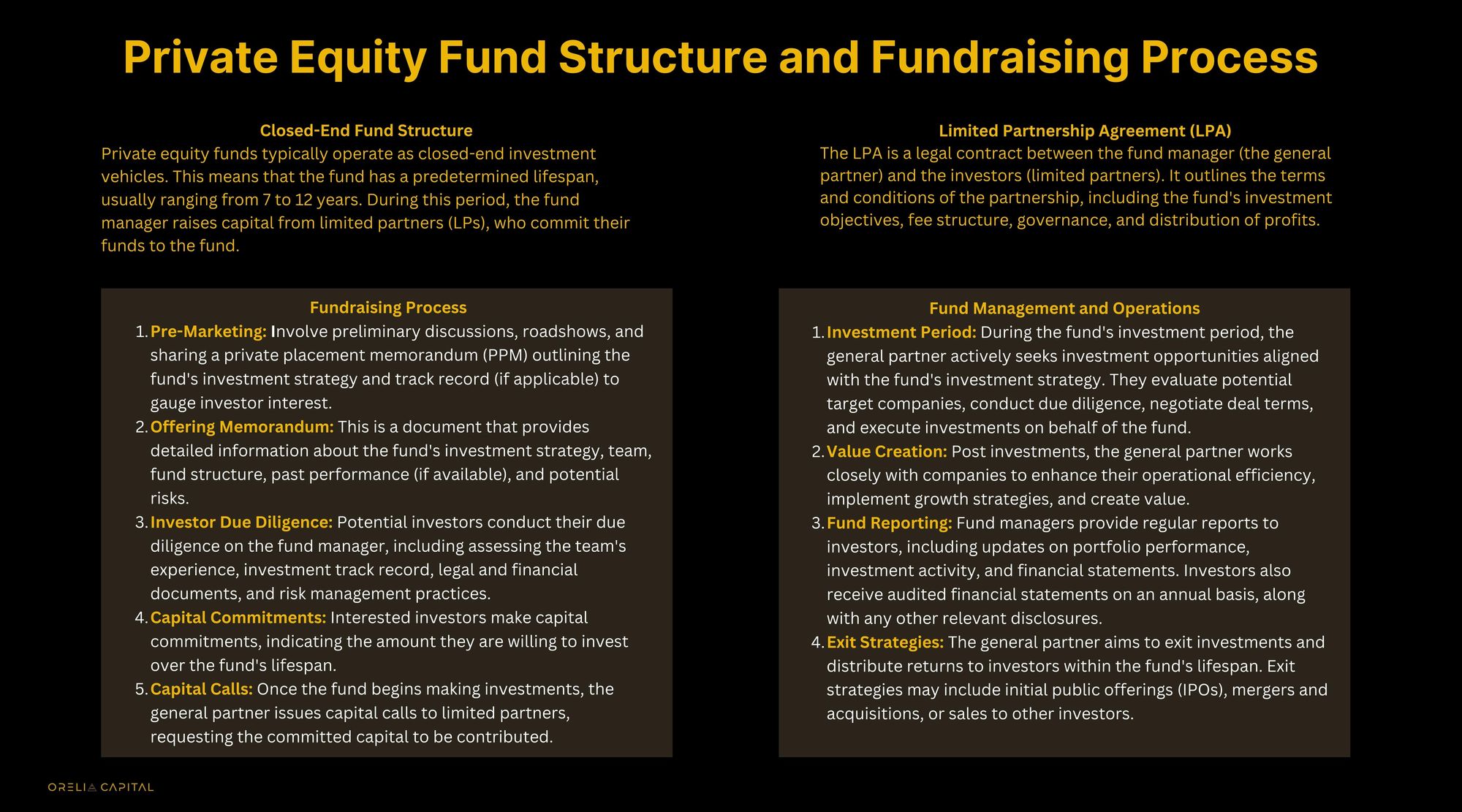Private Equity: Igniting Innovation and Fueling Financial Success

Introduction to Private Equity
Private equity is an alternative investment involving investing in privately held companies or non-publicly traded assets. Private equity investments aim to generate returns through capital appreciation, often by implementing operational improvements or strategic initiatives. Unlike investing in publicly traded stocks, private equity investors acquire ownership stakes in companies that are not listed on the stock market.
Private equity firms typically raise funds from institutional investors, such as pension funds, endowments, and wealthy individuals, to form private equity funds. These funds have a closed-end structure, meaning they have a predetermined lifespan, typically 7 to 10 years. During this period, the private equity firm actively manages the fund's investments and seeks to maximize returns.
Types of Private Equity Investments
- Buyouts: Buyouts involve acquiring a controlling stake or full ownership of an existing company. They can be classified into two main types:
a. Leveraged Buyouts (LBOs): LBOs use significant debt to finance the acquisition. The target company's assets and cash flow are collateral for the debt. Private equity firms typically seek to improve the company's operations, streamline processes, and drive growth to generate returns.
b. Management Buyouts (MBOs): MBOs occur when the existing management team of a company purchases a controlling stake or the entire company. Private equity firms provide the financing and expertise to support the management team's acquisition. - Growth Capital: Growth capital investments are made in established companies with a proven track record. The objective is to provide capital to fuel expansion plans, enter new markets, invest in research and development, or undertake strategic initiatives.
- Distressed Investments: Distressed investments involve acquiring the debt or equity of financially distressed companies or assets. These investments are made when companies face financial challenges, such as bankruptcy, restructuring, or operational difficulties.
- Mezzanine Financing: Mezzanine financing bridges the gap between equity and debt financing. It involves providing a combination of debt and equity instruments to the target company. Mezzanine financing is typically used to support acquisitions, expansion plans, or refinancing.
- Venture Capital: Although technically a separate asset class, venture capital investments can be considered a subset of private equity. Venture capital focuses on investing in early-stage companies with high growth potential. These investments typically target technology startups, innovative businesses, and disruptive ideas. Venture capital firms provide both capital and mentorship, guidance, and industry connections to help these companies succeed.


Key Characteristics of Private Equity Investments
- Long-Term Investment Horizon: Private equity investments have a longer horizon than traditional investments and are typically invested over several years.
- Potential for High Returns: By acquiring substantial ownership stakes in companies and implementing operational improvements or strategic initiatives, private equity firms aim to drive value creation and generate the potential for high returns.
- Active Involvement in Portfolio Companies: Private equity firms often take a hands-on approach, working closely with management teams to implement growth strategies, improve operational efficiency, and drive the profitability of their portfolio companies.
- Limited Diversification: Private equity investments typically involve allocating a significant portion of capital to a select number of companies that can limit diversification and increase the risk associated with individual investments.
Risks of Private Equity Investments
- Illiquidity: Illiquidity is a significant risk in private equity investments. Investors may face challenges in accessing their capital before the investment exits. In economic downturns or unforeseen circumstances, selling or exiting investments can be challenging, potentially leading to delayed or reduced returns.
- Valuation Uncertainties: Valuing private equity investments can be challenging due to the lack of a market price. Determining the fair value of an investment relies on various factors such as financial performance, market conditions, and comparable transactions.
- Operational and Execution Risks: Private equity investments involve actively managing portfolio companies to drive value. However, executing operational improvements and growth strategies carries inherent risks.
- Limited Transparency: Private equity investments often lack transparency compared to publicly traded investments. Investors may have limited access to detailed information about the underlying investments or the ongoing operations of portfolio companies.

Private Equity Returns and Performance Evaluation
Evaluating the performance of private equity investments involves analyzing the cash flows generated and comparing them to the initial capital invested. Here is a closer look at private equity returns and the key metrics used for performance evaluation:
- Cash Flows: The primary sources of cash flows include capital contributions from investors, distributions from portfolio companies (such as dividends or proceeds from a sale), and the return of capital upon exiting investments.
- Internal Rate of Return (IRR): IRR is a commonly used metric to measure the rate of return generated by a private equity investment over its entire life cycle. It considers the timing and magnitude of cash flows. The higher the IRR, the better the performance of the investment.
- Multiple on Invested Capital (MOIC): MOIC is a metric that measures the total multiple of capital returned to investors relative to the initial capital invested. It is calculated by dividing the total distributions received by the initial investment.
💡 For example, if an investment generated $2 million in total distributions and the initial investment was $1 million, the MOIC would be 2x. A higher MOIC indicates a more successful investment. - Benchmarking: Private equity performance is often compared to benchmark indices, such as public market indices (e.g., S&P 500) or private equity-specific benchmarks (e.g., Cambridge Associates Private Equity Index).
- Track Record Analysis: Analyzing the historical performance of a private equity fund manager is essential when evaluating a fund's potential.
Resource Hub
Private Equity Fund Structure Explained
How to Get Into Private Equity
Investing in Private Equity for Everyday Investors
The Strategic Secret of Private Equity

We hope you enjoyed this edition of our newsletter. If you found it helpful, please consider sharing it with others who might benefit from this information.
At Orelia Capital, we believe that feedback is a gift. Your feedback can help us improve our content and provide more value to our readers.
